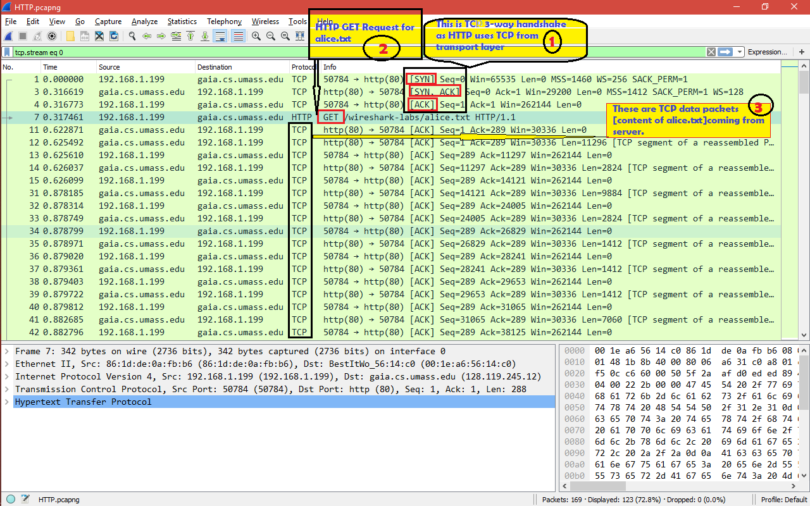
- WIRESHARK LINUX LAB INSTALL
- WIRESHARK LINUX LAB SOFTWARE
- WIRESHARK LINUX LAB PASSWORD
- WIRESHARK LINUX LAB WINDOWS 7
This will open separate windows for these hosts.

At the mininet prompt, start terminal windows on hosts H1 and H2. Step 3: Record IP and MAC addresses for H1 and H2.Ī. When prompted, enter cyberops as the password. Open a terminal emulator to start Mininet and enter the following command at the prompt.
WIRESHARK LINUX LAB INSTALL
Password: cyberops Step 2: Run the Python script to install the Mininet Topology. Start and log into your CyberOps Workstation that you have installed in a previous lab using the following credentials: Step 1: Verify your PC’s interface addresses. You will then record the IP and MAC addresses for H1 and H2. In this part, you will use a Python script to set up the Mininet Topology inside the CyberOps VM. Instructions Part 1: Install and Verify the Mininet Topology

If using a packet sniffer, such as Wireshark, is an issue, the instructor may wish to assign the lab as homework or perform a walk-through demonstration. It is recommended that permission is obtained before running Wireshark for this lab. Instructor Note: Using a packet sniffer, such as Wireshark, may be considered a breach of the security policy of the school. You will use Wireshark to capture ICMP data packets. Wireshark is a useful tool for anyone working with networks for data analysis and troubleshooting. As data streams travel over the network, the sniffer “captures” each protocol data unit (PDU) and can decode and analyze its content according to the appropriate RFC or other specifications.
WIRESHARK LINUX LAB SOFTWARE
Wireshark is a software protocol analyzer, or “packet sniffer” application, used for network troubleshooting, analysis, software and protocol development, and education. For example, in this lab you will use the ping command between two hosts in the Mininet Topology and capture those pings with Wireshark. This will allow you to simulate a variety of network protocols and services without having to configure a physical network of devices. You will then have access to four hosts, a switch, and a router inside your one VM. The CyberOps VM includes a Python script that, when you run it, will set up and configure the devices shown in the figure above. Part 2: Capture and Analyze ICMP Data in Wireshark Background / Scenario.Part 1: Install and Verify the Mininet Topology.Instructor Note: Red font color or gray highlights indicate text that appears in the instructor copy only.
WIRESHARK LINUX LAB PASSWORD
We used wireshark to start a connection with the line and then filter the packages received to ftp to get the username and password in clear text.5.3.7 Lab – Introduction to Wireshark (Instructor Version)
WIRESHARK LINUX LAB WINDOWS 7
This task we used the sniffer and wire shark to view the user name and password of the person logging onto the windows 7 terminal and the back attack 4 terminal using both sides of the networks. The command ifconfig -a views all the available interfaces on the system. How can you display all of the network interfaces in Linux? How do you determine available switches for tcpdump?Ĥ. The sniffer operates in promiscuous mode.ģ. In what mode does a sniffer’s network interface operate?

No, the sniffer doesn't require an IP address, it wants to remain invisible to the other machines in order to intercept messages undetected.Ģ. Does a network interface on a sniffer machine require an IP Address? This shows the packages received by the snifferġ.

We then used the wire shark in order to view the intercepted packages. To do this we sent pings from one machine to the other and the sniffer received these pings at the same time as the other machine. We then used the Linux sniffer to watch the two networks, one on the ip 192.168.100.5 and the other with the ip 10.10.19.202 this then meant we had to set up the sniffer to use these two networks to intercept the data and receive packages from each line. The first thing needed to do in the lab was connect to all of the virtual machines and apps.


 0 kommentar(er)
0 kommentar(er)
